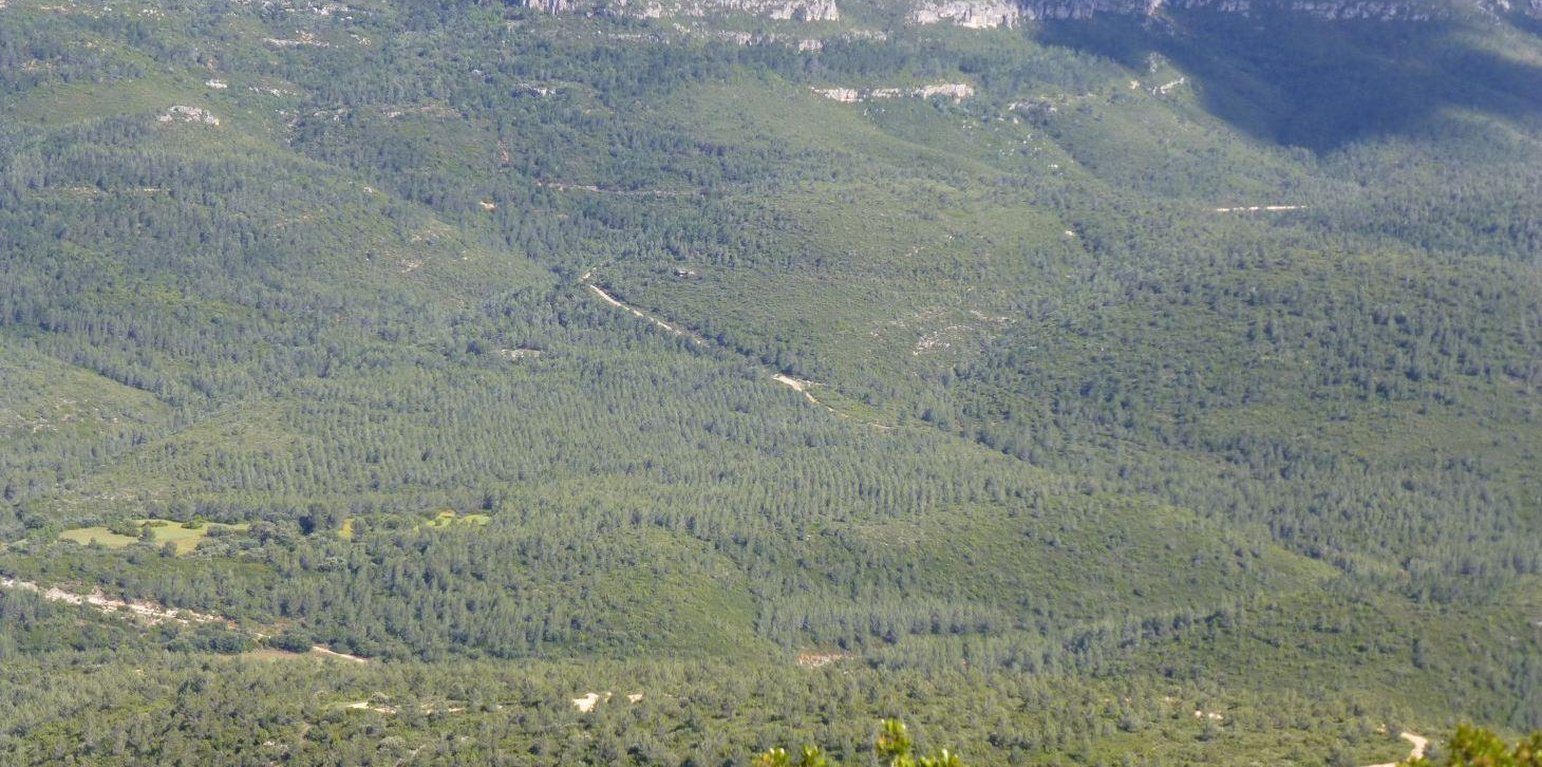



As a consequence of the devastating fire of the year 1979 which destroyed 33’000 ha of forest, strong erosion processes occurred on the bare soil and hindered the vegetation to regrow. Furthermore, this region was already abandoned (rural exodus) and missing management practices increased the problem of erosion. Therefore the government mandated to afforest the burnt areas in 1985.
The main purpose of the afforestation was to reduce the soil erosion (which was severe at that time) by planting trees, which increases soil stability and enables forest growth again. But the state also wanted to ensure wood extraction in the future. Furthermore, the visual impact was an important driver for afforesting this area.
The afforestation was executed in the winter of 1985 (November-February/March) by the regional forest services (Conselleria de agricultura). Forest engineers, who worked for the state and planned the project, collaborated with forest agents whereas the involved forest agents contracted local villagers to help afforesting these areas. The forest agent acted as a link between engineer and forest brigade and controlled if the brigade executed what the engineer proposed. He also provided assistance to the workers. The forest brigade was paid by day-if it was raining, people did not work and did not get any salary.
Nobody could provide direct information on the afforestation process in 1985 but there are not many differences of how they did it in the past and how it works today. The planting holes (60cm x 60cm x 60cm) were created with a machine (Caterpillar) using a “spoon” to open a hole and cover it again. This process loosens the soil (only possible in soils which are free from big stones). It should be noted that they did not use a ripper, they knew that the soil is destroyed using this technique. The seedlings were planted manually by the forest workers and arranged linearly because this facilitated the handling of the machines. Since the soil had a low stone content, it was suitable for the establishment of a forest.
The afforested area covered around 100 ha (not continuously). Today, the costs of an afforestation are around 1500 Euro per ha, but in the past it was less expensive. They only planted Pinus Halepensis. Today, a seedling of this tree species costs between 20 and 60 Cents. If the regional forest services have their own nurseries, they do not need to spend money to buy seedlings.
The success of an afforestation depends on numerous factors such as aspect and humidity (better on north-facing slopes), soil amount/fertility (better conditions on former cultivated fields), origin of the seedlings (adapted to the local climatic conditions), variability/uncertainty of the weather conditions (e.g. droughts, freezing). Usually a plantation is done in October/November and therefore especially the first summer determines the success. If it is too dry the plant will not grow (roots are too short to reach the humidity deeper in the ground). Further, the availability of trained people and the selection of appropriate machines are crucial.
The documented afforestation is one of a few examples of afforestation trials which succeeded. Today there is a forest where young pines are growing naturally ("children" of the planted ones), but also resprouter species (e.g. Quercus) can be found, which regenerated without having been planted and apparently were dispersed by birds.
But there are also some problems related to this afforestation. The forest agent explained that there is a high pest risk since monoplantations are less resilient to diseases (sick or dead plants in turn increase the fire risk). Another problem is that the trees were planted too densely (800-1000 plants per ha with a spacing of 5-10m) which requires recurrent management of the forest. Knowing about this problem, around the year 2003 they managed the area doing a selective clearing to reduce both the continuity and the competition between the species and thus also reduced the fire risk (“ayuda regeneración”). But the forest has become extremely dense again, thus increasing the risk of fires. There is a need to manage this area again and to extract biomass (selective clearing), but unfortunately no management project is planned for the near future.
The region of Ayora is mountainous with a dry subhumid climate (~380 mm annual rainfall). The risk of fire incidence is at its highest from June to September when there are adverse conditions like drought, high temperatures and strong winds (mainly the winds coming from central Spain, called “poniente”).
The population density is very low and there are only few job opportunities (e.g. marginal agriculture, grazing, hunting, beekeeping). The plantation provided jobs for rural people. Also today forest management could be a source for jobs.
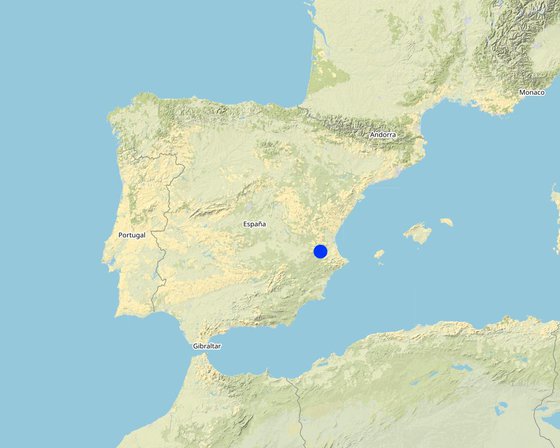
الموقع: Ayora, La Molinera, Spain, Valencia, إسبانيا
عدد مواقع تنفيذ التقنيةالتي تم تحليلها:
انتشار التقنية: منتشرة بالتساوي على مساحة (approx. 0.1-1 كم2)
في منطقة محمية بشكل دائم؟:
تاريخ التنفيذ: منذ 10-50 سنة
نوع التقديم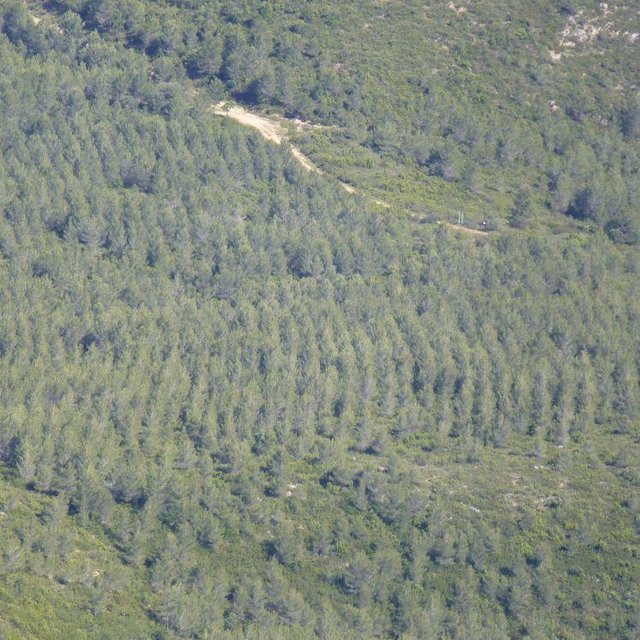
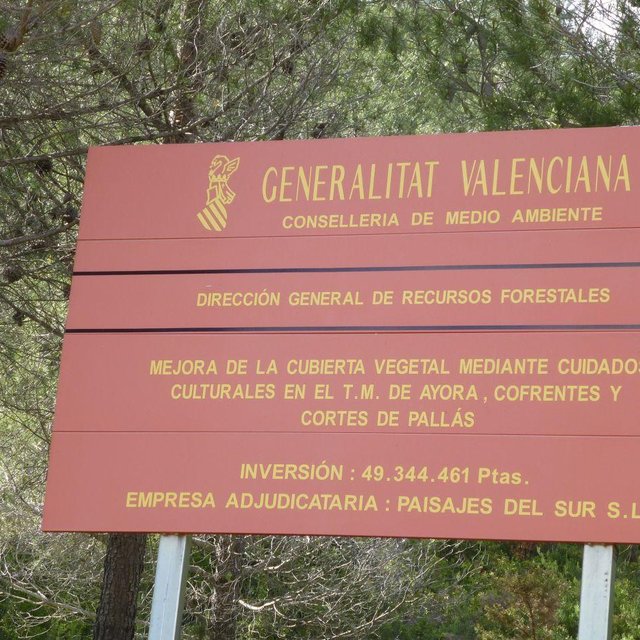




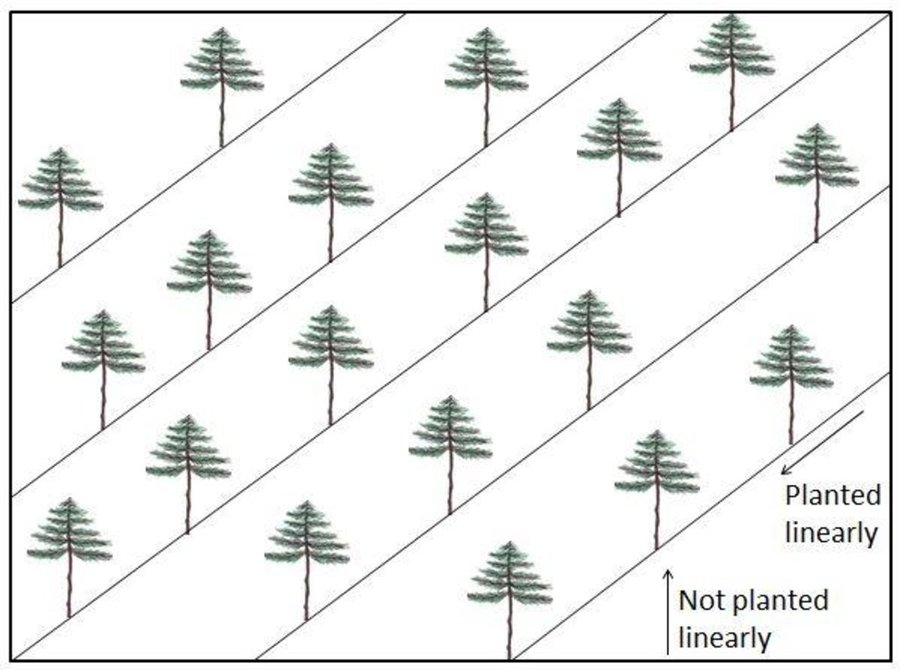
| تحديد المدخلات | الوحدة | الكمية | التكاليف لكل وحدة (Euro) | إجمالي التكاليف لكل مدخل (Euro) | % من التكاليف التي يتحملها مستخدمو الأراضي |
| معدات | |||||
| machine use | ha | 1,0 | 4857,0 | 4857,0 | |
| إجمالي تكاليف إنشاء التقنية | 4'857.0 | ||||
| إجمالي تكاليف إنشاء التقنية بالدولار الأمريكي | 6'563.51 | ||||
| تحديد المدخلات | الوحدة | الكمية | التكاليف لكل وحدة (Euro) | إجمالي التكاليف لكل مدخل (Euro) | % من التكاليف التي يتحملها مستخدمو الأراضي |
| معدات | |||||
| machine use | ha | 1,0 | 2428,0 | 2428,0 | |
| إجمالي تكاليف صيانة التقنية | 2'428.0 | ||||
| إجمالي تكاليف صيانة التقنية بالدولار الأمريكي | 3'281.08 | ||||
After planting, grazing should be banned/restricted
The natural process of vegetation growth was accelerated through the plantation of pines. There will be more wood in the future (develops only slowly).
Wood, hunting, mushrooms
Less agricultural land available (but the question is also if the land would be used for agriculture since it is quite a remote area)
Forest has a higher aesthetic value than a burnt area or shrubland. In general people are attracted by afforestations, but since this afforestation has been done in a remote area people don’t visit this place more frequently
Local people know about the importance of conservation of the area and like to have a healthy forest which is protected from wildfires.
The afforestation provided many job opportunities (in the year 1985, today not anymore)
In the year 1985 the afforestation created jobs for the unemployed. But it seems that in general forest management is not something people want to do, they work in this sector only if there are no other job opportunities. Until today this attitude did not change much. Forest management means a hard job and this kind of work is not well-respected in society.
More moisture is stored in the soil and less water is lost by evaporation (the soil is covered)
More soil moisture because of vegetation cover (soil is not exposed and does therefore not dry out)
Today different plant species can be found although only pines (Pinus Halepensis) was planted
There are maybe more animals because of shelter, different vegetation composition, and fodder supply. Hunters also cultivate some fields in this region to attract the game.
Higher fire risk than if there would be agriculture or bare land. Lack of forest management resulted in a high density of the vegetation which increases the risk of fire
Trees reduce the wind velocity compared to shrubland or bare soil
In general, but in this case it is not that important
In general but in this case it is not that important because in this area there are no cultivations
Streets are better protected
Less work is required to clean the water ponds